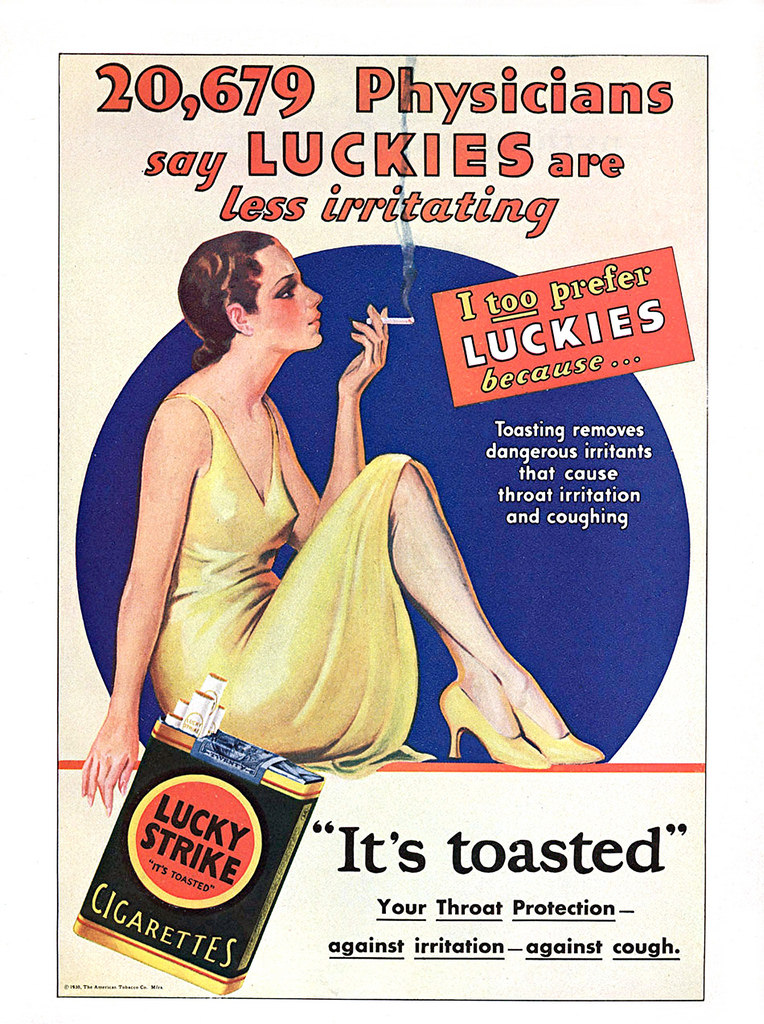The instant success of blended cigarette brands such as Camel, Lucky Strike, and Chesterfield spurred the tobacco industry to spend millions on promotion and advertising. Several tobacco marketers advertised healthy, active, fun-loving people in their advertisements. Often, these were sports and entertainment celebrities. Some cigarette companies even used children in their advertisements.
Several ads featured concern over weight gain, while others featured the comforts of middle-class families’ homes, holidays, recreation, or pets. Before the 1930s, tobacco consumption was rarely bad for people’s health. Due to the tobacco industry’s lobbying power and lack of understanding of nicotine’s consequences, cigarettes were exempted from all meaningful legislation at the time. Women’s magazines advertised cigarettes in a way that made them look stylish and desirable. Women were encouraged to imagine themselves as participants in the modern world and to reimagine themselves as modern, feminine subjects through consumption. Women were often excluded due to their domestic roles, despite the emergence of transportation, communication, industrialization, urbanization, and modernization. Tobacco advertisements generally did not target women as consumers but as entertainers or sell products to men. Magazines like Vogue explored consumption culture and encouraged readers to reinvent themselves. To remain legally accessible and affordable, cigarettes also had to be advertised and articulated in society in certain ways.
Many branded cigarettes were distributed free or at a substantial discount to troops during World War I. During that time, the demand for cigarettes in North America, doubling roughly every five years, began to rise even faster, almost trebling. Smoking became less of a concern in the face of imminent violence, and drivers were supported in bringing cigarettes to the front lines. The YMCA, the Salvation Army, and the Red Cross distributed billions of cigarettes to soldiers in Europe. Even in jurisdictions where cigarettes were illegal to sell, private individuals donated money to send cigarettes to the front. It was considered unpatriotic not to give cigarettes to soldiers. A generation had grown up by the war’s end, and a large percentage of adults smoked, making anti-smoking campaigns significantly more difficult. Smoking became more socially acceptable after returning soldiers began smoking. Alcohol became the focus of temperance groups. State anti-smoking laws were repealed except for those affecting minors by 1927.








































